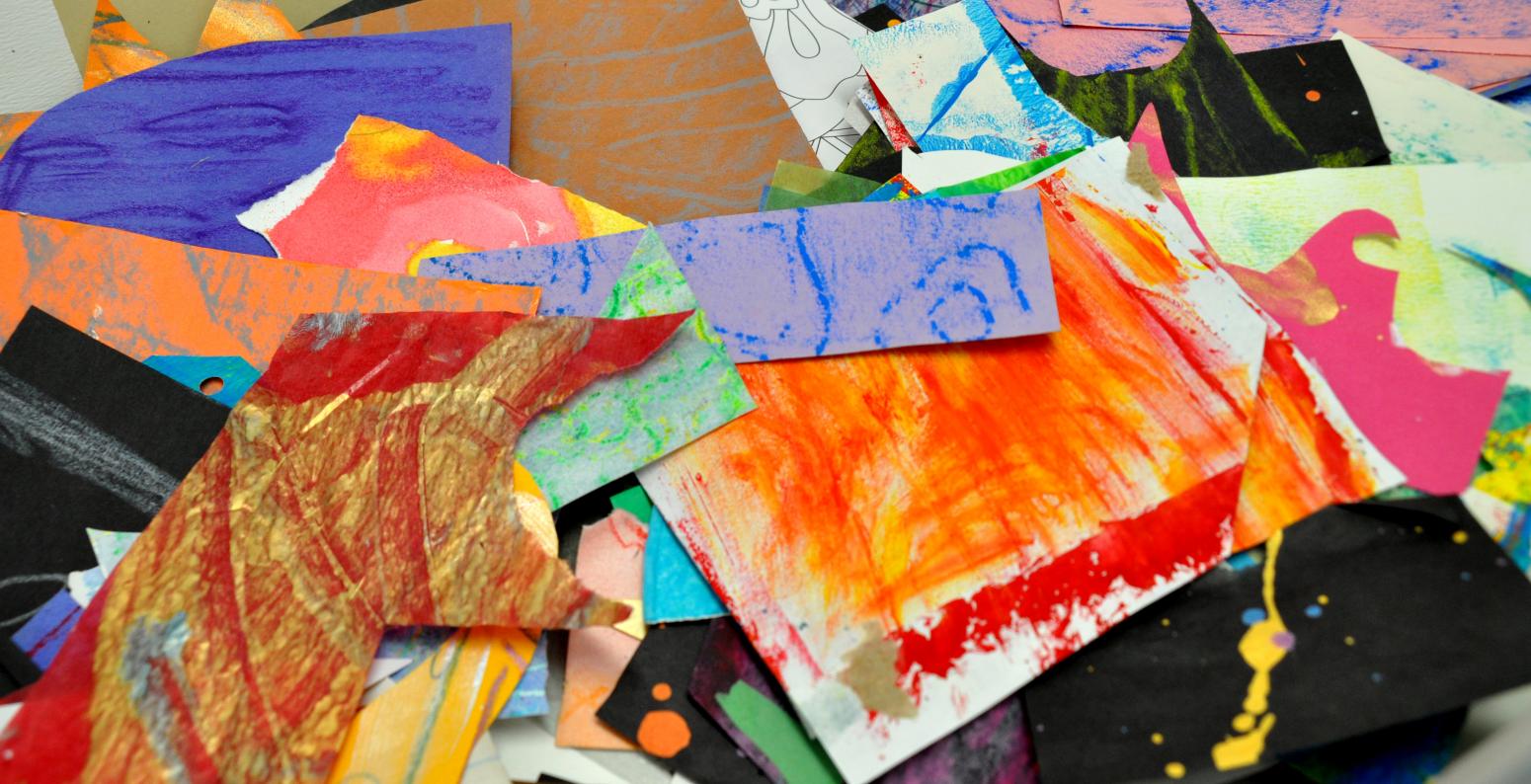Article Type
Making Art Together
Making Art Together Categories
Theory and Resources
Sustainability in the Art Studio
April 20, 2021
In 2018, the Art Studio announced our intentions to reduce our plastic usage. Over the course of the past two years, we have spent considerable time researching sustainability, creating new systems, testing out new products, and intentionally designing projects with sustainability in mind. We’d like to share with you some of the things we have learned since that last post.
Throughout this entire process, we’ve re-discovered the importance of research and learned that every town/state/country has a completely different recycling system. For example, in one town, you might be able to recycle black plastic, but in another you cannot. Some states will allow you to recycle colored construction paper, while others cannot handle pigmented paper at all. We recommend that anyone interested in learning about how to recycle art materials make connections with their local waste management facilities.
We’ve also learned that the recycling system overall is flawed. The current system of recycling puts the impetus on the consumer to recycle a material, not the manufacturer. This often results in recyclable resources ending up in landfills because consumers are tasked with researching how to properly recycle and often lacking the resources to do so. And even when properly recycled, items at recycling centers can become contaminated by non-recyclable or dirty items that have been improperly recycled, dooming the whole batch to the landfill.
While we will continue to recycle materials as well as we can, we understand now, more than ever, how important it is to follow the three R’s in order; reduce, then reuse, then recycle. In addition, we can source materials that are shipped, marketed, and created in a more sustainable manner. Finding the materials and companies that support sustainable practices can require a lot of time to research, which is why we feel it is important to share our findings from the past two years:
We’ve learned that any plastic film that stretches, rather than tears, can be recycled at
shopping locations across the country. With this in mind, we’ve been collecting plastic wraps and bags from our shipments to recycle at our local collection centers.
Collecting these materials has brought a greater awareness of how items are packaged for shipping, and how often they involve plastics. We notice a variety of shipping methods from paper to Styrofoam packing peanuts, and prefer when things come wrapped in paper. The packing papers are easily re-purposed as collage papers or recycled.
We have learned that some companies are closing the recycling loop by providing recycling programs through TerraCycle®. We have been using two of their programs,
a recycling program by Dixon, (the manufacturer of our watercolor palettes, glue sticks, and markers) and
a program by BIC® where they recycle art supplies and writing implements. We are also working with a local school to recycle through
Crayola’s ColorCycle program which recycles any brand name’s markers.
We have learned a lot about adhesives and the lack of recyclable options, especially when it comes to tape. We are currently testing out
completely recyclable tape alternatives, so feel free to check out that article on our findings!
While there have been successes along the way, we have also discovered pitfalls within our research. The new tempera cakes we like because they pass our quality and health & safety tests are packaged in a lot of non-recyclable plastic, and they aren’t sold in refill packs. We cannot easily recycle the plastic cores of tape rolls. The black plastic our glue sticks are shipped on cannot be recycled with the glue stick recycling program. When left with these challenges, we try to find creative re-use solutions for the plastic materials we cannot effectively recycle, while also calling companies to encourage them to start closed-loop recycling programs, and to make more sustainable products.
After two years of research, exploration, and discoveries, we now feel better equipped to incorporate sustainability within our projects. We’ve created new recycling systems in the studio, we talk with our team and the public about our findings and sustainability values, and continually research how to create tighter project cycles that reduce before reuse, reuse before recycle, and recycle when possible before the landfill.
Note: The Art Studio is not paid or sponsored by any manufacturer or art supplier. The blog post above is an objective account of our two-year discovery journey that will continue to develop as we learn more.
Authors
Sara Ottomano
Art Educator from 2016-2023 at The Eric Carle Museum of Picture Book Art, Sara (she/her) is enthusiastic about helping others approach art through exploration and experimentation.
Explore Further
Making Art Together
The Art Studio shares the reasons behind their decision to stop using plastics for materials in art projects.
Making Art Together
Explore environmentally-friendly tape alternatives.
Making Art Together
Read about how we deconstruct past projects to reuse as many materials as possible.


